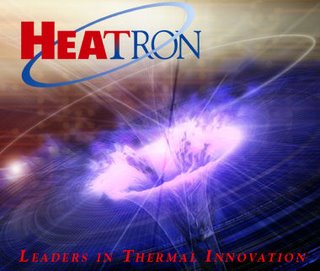ElectriPlast: A Heatron Follow-up . . .

Plastics Get
The Juice
By Joseph Ogando --
Design News Correspondent, June 26, 2006
More conductivity means more applications for conductive plastics
For a glimpse of how to use electrically and thermally conductive plastics, look no further than Integral Technologies' growing patent portfolio for its ElectriPlast materials.
The company, Integral Technologies, (http://itkg.net) has developed technology for producing highly conductive plastic compounds that duplicate the electrical and thermal conductivity of even the most conductive metals. "We have the ability to mimic the electrical conductivity of silver and copper," says Tom Aisenbrey, Integral's vice president of product development and chief technology officer. The same goes for thermal conductivity, he adds.
Since introducing ElectriPlast materials nearly three years ago, the company's technologists have devised a long list of potential uses for plastics that can be injection molded, carry current and manage heat. The company has already been awarded 12 patents for potential ElectriPlast applications, including several for molded thermoplastic plastic antenna designs. It has another 88 patents pending for a wide range of other applications. These include a wide variety of injection molded electrical components — such as circuits, capacitors, RFID tags, 3D EMI shields, and more (go to http://www.itkg.net/index.php?page=194 for a complete list).
And in April, the company licensed ElectriPlast to Heatron Inc. (http://www.heatron.com/), a maker of thermal management and high-power LED components.
Integral produces its conductive materials by incorporating micron- and nano-sized conductive powders and fibers into a wide variety of base resins. "The technology works with any base resin, about 15,000 of them in all," Aisenbrey says. The company has dozens of recipes for its conductive materials and can tailor the electrical or thermal properties to a given application. Typically, the resistivity spans a range from graphite (about 7.5 × 10-6 ohm cm) to copper (1.7 × 10-8 ohm cm), and thermal conductivity tops out at about 400 w/mK, Aisenbrey says.
What he won't say is exactly how the company achieves such high levels of conductivity, other than to say the proprietary technology involves modifications to the conductive additives themselves, as well as careful compounding methods. Together these two strategies promote a homogenous dispersion of the conductive materials within the base resin. A homogeneous dispersion, in turn, allows Integral to achieve high conductivity at filler loadings low enough not to minimize any loss of the base plastic's mechanical properties, according to Aisenbrey. "That's the beauty of the technology," Aisenbrey says.








0 Comments:
Post a Comment
<< Home